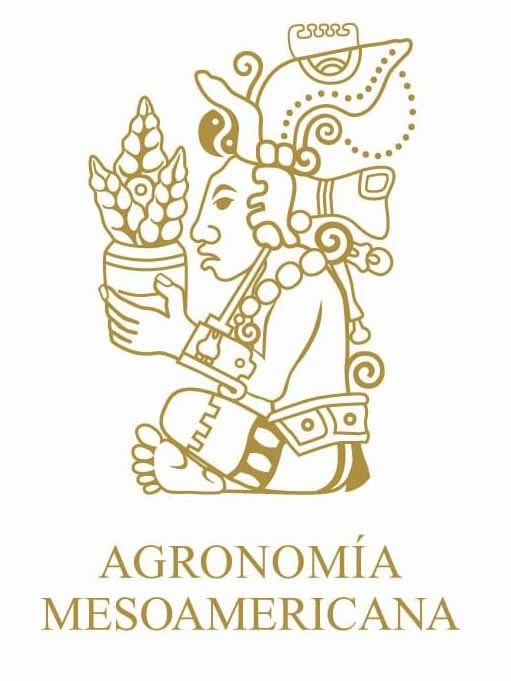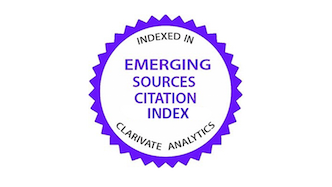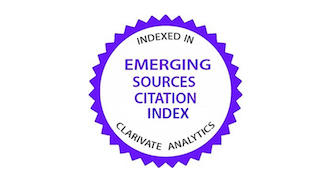Ultra-low-fat Muscovy duck (Cairina moschata) ham with grapefruit (Citrus x paradisi L.) albedo flour
DOI:
https://doi.org/10.15517/3v3jz593Keywords:
fiber, antioxidant capacity, sensory evaluation, texture profile, water-holding capacityAbstract
Introduction. Sausages are products that are consumed worldwide and that allow the use of not only this type of meat but of other underused raw materials, such as the case of grapefruit (Citrus x paradisi L.) albedo, which is a subproduct of the citrus industry that has fiber and antioxidants that are important for human health. Objective. To evaluate the effect of adding debittered grapefruit albedo flour on the physicochemical, sensory, and microbiological characteristics of ultra-low-fat duck ham. Materials and methods. The study was conducted at the Faculty of Technical Education for Development at the Catholic University of Santiago de Guayaquil, Ecuador, between September 2022 and August 2023. Four treatments were formulated, with the addition of 0 %, 2 %, 4 %, or 6 % grapefruit albedo flour. The hams were evaluated for physical-chemical parameters (pH, titratable acidity, moisture content, ash, protein, fiber, fat, total phenols, and antioxidant capacity); technological properties (emulsion stability, yield, water-holding capacity); sanitary aspects (aerobic mesophilic microorganism count, Escherichia coli, Staphylococcus aureus, and Salmonella); texture profile analysis; sensory evaluation (acceptance test, purchase intention, check all that apply) with 41 consumers. Results. The produced products met sanitary and compositional standards. The addition of grapefruit albedo flour increased antioxidant capacity, fiber content, and water-holding capacity. All products received a rating equivalent to “Moderately Liked.” Although hardness and elasticity decreased with increased flour content, texture acceptance was not affected. Conclusions. It is possible to produce duck hams by incorporating up to 6 % debittered grapefruit albedo flour, resulting in good acceptance, higher fiber content, and enhanced antioxidant capacity.
References
Abdel-Naeem, H. H., Elshebrawy, H. A., Imre, K., Morar, A., Herman, V., Pașcalău, R., & Sallam, K. I. (2022). Antioxidant and antibacterial effect of fruit peel powders in chicken patties. Foods, 11(3), Article 301. https://doi.org/10.3390/foods11030301
Ahn, J. Y., Kim, T. K., Shin, D. M., Lee, J. H., Cha, J. Y., Kim, Y. J., Park, M., & Choi, Y. S. (2023). Comparison of quality characteristics of smoked duck hams in domestic market. Food and Life, 2023(2), 49-54. https://doi.org/10.5851/fl.2023.e5
Alrawashdeh, H., & Abu-Alruz, K. (2022). Development of High-Fiber, Low Fat Chicken Nuggets. International Journal of Food Studies, 11(2), 354–373 https://doi.org/10.7455/ijfs/11.2.2022.a8
Aminzare, M., Hashemi, M., Afshari, A., Noori, S. M. A., & Rezaeigolestani, M. (2022). Comparative evaluation of the effects of different dietary fibers as natural additives on the shelf life of cooked sausages. Jundishapur Journa of Natural Pharmaceutical, 17(3), Article e121624. https://doi.org/10.5812/jjnpp-121624
Aminzare, M., Hashemi, M., Afshari, A., Noori, S. M. A., & Rezaeigolestani, M. (2024). Development of Functional Sausages: A Comparative Study of the Impact of Four Dietary Fibers on the Physico-Chemical Properties of Mortadella Sausages. Journal of Human Environment and Health Promotion, 10(2), 83-88. https://doi.org/10.61186/jhehp.10.2.83
Andrews, W. H., Wang, H., Jacobson, A., Ge, B., Zhang, G., & Hammack, T. (2023). Bacteriological Analytical Manual (BAM). Chapter 5: Salmonella (Bacteriological Analytical Manual). United States Food and Drug Administration. https://www.fda.gov/media/172194/download?attachment
Association of Official Analytical Chemists. (2023a). Official method 950.46. Loss on drying (moisture) in meat. In G. W. Latimer, Jr. (Ed.), Official methods of analysis of AOAC International (Chapter 39.1.02, 22nd ed.). Oxford University Press. https://doi.org/10.1093/9780197610145.003.3431
Association of Official Analytical Chemists. (2023b). Official method 962.09 Fiber (crude) in animal feed and pet food: Ceramic fiber filter method. (2023). In G. W. Latimer, Jr. (Ed.), Official methods of analysis of AOAC International (Chapter 4.6.01, 22nd ed.). Oxford University Press. https://doi.org/10.1093/9780197610145.003.1416
Association of Official Analytical Chemists. (2023c). Official method 992.15. Crude protein in meat and meat products: Including pet foods. Combustion method. In G. W. Latimer, Jr. (Ed.), Official methods of analysis of AOAC International (Chapter 39.1.16, 22nd ed.). Oxford University Press. https://doi.org/10.1093/9780197610145.003.3446
Association of Official Analytical Chemists. (2023d). Official method 2003.06. Crude fat in feeds, cereal grains, and forages: Randall/Soxtec/Hexanes extraction-submersion method. In G. W. Latimer, Jr. (Ed.), Official methods of analysis of AOAC International (Chapter 4.5.06, 22nd ed.). Oxford University Press. https://doi.org/10.1093/9780197610145.003.1415
Association of Official Analytical Chemists. (2023e). Official method 966.23. Microbiological methods. In G. W. Latimer, Jr. (Ed.), Official methods of analysis of AOAC International (Chapter 17.2.01, 22nd ed.). Oxford University Press. https://doi.org/10.1093/9780197610145.003.2172
Azanedo, L., Garcia-Garcia, G., Stone, J., & Rahimifard, S. (2020). An overview of current challenges in new food product development. Sustainability, 12(8), Article 3364. https://doi.org/10.3390/su12083364
Baioumy, A. A., & Abedelmaksoud, T. G. (2021). Quality properties and storage stability of beef burger as influenced by addition of orange peels (albedo). Theory and Practice of Meat Processing, 6(1), 33-38. https://doi.org/10.21323/2414-438X2021-6-1-33-38
Barbut, S. (2023). Research note: Effects of fiber source on the physicochemical properties of lean poultry meat products. Poultry Science, 102(5), Article 102423, https://doi.org/10.1016/j.psj.2022.102423
Ben Zid, M., Dhuique-Mayer, C., Bellagha, S., Sanier, C., Collignan, A., Servent, A., & Dornier, M. (2015). Effects of blanching on flavanones and microstructure of Citrus aurantium peels. Food and Bioprocess Technology, 8(11), 2246–2255. https://doi.org/10.1007/s11947-015-1573-1
Biswas, S., Bhattacharyya, D., Patra, G., Das, A. K., & Das, S. K. (2019). Technological investigation into duck meat and its products-a potential alternative to chicken. World’s Poultry Science Journal, 75(4), 609–620. https://doi.org/10.1017/S004393391900062X.
Cardona-Hincapié, J. A., Restrepo-Molina, D. A., & López-Vargas, J. H. (2020). Effect of a total substitution of vegetable protein and phosphates on shrinkage by cooking and purging in chopped york ham. Revista Facultad Nacional de Agronomía Medellín, 73(3), 9333-9340. https://doi.org/10.15446/rfnam.v73n3.80131
Chappalwar, A. M., Pathak, V., Goswami, M., Verma, A. K., & Rajkumar, V. (2021). Efficacy of lemon albedo as fat replacer for development of ultra‐low‐fat chicken patties. Journal of Food Processing and Preservation, 45(7), Article e15587. https://doi.org/10.1111/jfpp.15587
Chen, C., Fan, X., Hu, Y., Zhou, C., Sun, Y., Du, L., & Pan, D. (2023). Effect of different salt substitutions on the decomposition of lipids and volatile flavor compounds in restructured duck ham. LWT-Food Science and Technology, 176, Article 114541. https://doi.org/10.1016/j.lwt.2023.114541
Choe, J., Lee, J., Jo, K., Jo, C., Song, M., & Jung, S. (2018). Application of winter mushroom powder as an alternative to phosphates in emulsion-type sausages. Meat Science, 143, 114-118. https://doi.org/10.1016/j.meatsci.2018.04.038
Coelho, S. R., Lima, Í. A., Martins, M. L., Júnior, A. A. B., de Almeida Torres Filho, R., Ramos, A. D. L. S., & Ramos, E. M. (2019). Application of Lactobacillus paracasei LPC02 and lactulose as a potential symbiotic system in the manufacture of dry-fermented sausage. LWT-Food Science and Technology, 102, 254-259. https://doi.org/10.1016/j.lwt.2018.12.045
Czech, A., Malik, A., Sosnowska, B., & Domaradzki, P. (2021). Bioactive substances, heavy metals, and antioxidant activity in whole fruit, peel, and pulp of citrus fruits. International Journal of Food Science, 2021(1), Article I6662259. https://doi.org/10.1155/2021/6662259
Dagevos, H., & Verbeke, W. (2022). Meat consumption and flexitarianism in the Low Countries. Meat Science, 192, Article 108894 https://doi.org/10.1016/j.meatsci.2022.108894
da Silva Costa, J., dos Santos, W. M., Lemos, I. M. T., dos Santos Braga, B. S., dos Santos, M. A. S., & de Araújo Guimarães, E. D. A. (2023). Nutritional aspects and commercial challenges of Muscovy duck meat (Cairina moschata). World's Poultry Science Journal, 79(3), 513-533. https://doi.org/10.1080/00439339.2023.2234347
De Angelis, D., Vurro, F., Santamaria, M., Garzon, R., Rosell, C. M., Summo, C., & Pasqualone, A. (2023). Effect of dry-fractionated pea protein on the physicochemical properties and the nutritional features of gluten-free focaccia flat bread. LWT-Food Science and Technology, 182, Article 114873. https://doi.org/10.1016/j.lwt.2023.114873
de Araújo, P. D., Araújo, W. M. C., Patarata, L., & Fraqueza, M. J. (2022). Understanding the main factors that influence consumer quality perception and attitude towards meat and processed meat products. Meat Science, 193, Article 108952. https://doi.org/10.1016/j.meatsci.2022.108952
de Oliveira Paula, M. M., Massingue, A. A., de Moura, A. P. R., de Deus Souza Carneiro, J., de Lemos Souza Ramos, A., & Ramos, E. M. (2021). Temporal dominance of sensations and check-all-that-apply analysis of restructured cooked hams elaborated with different salt content and pork quality meats. Food Science and Technology International, 27(1), 73-83. https://doi.org/10.1177/1082013220932355
Eldahrawy, M., Salem, A. M., & Nabil, M. (2022). The efficiency of citrus peel powders in improvement of meat quality during chilled storage. Benha Veterinary Medical Journal, 42(2), 208-213. https://doi.org/10.21608/BVMJ.2022.144967.1535
Farag, Z. S., Farhat, R. M., & Sharaf, A. M. (2024). Impact of Incorporating Mango Peels Powder on Beef Burger Quality Attributes. Journal of Food and Dairy Sciences, 15(11), 151-158. https://doi.org/10.21608/jfds.2024.328086.1170
Feng, P., Weagant, S. D., Grant, M. A., Burkhardt, W., Shellfish, M., & Water, B. (2020). Bacteriological Analytical Manual (BAM). Chapter 4: Enumeration of Escherichia coli and the Coliform Bacteria. Bacteriological analytical manual, 13(9), 1-13. United States Food and Drug Administration. https://www.fda.gov/media/182572/download?attachment
Fu, L., Du, L., Sun, Y., Fan, X., Zhou, C., He, J., & Pan, D. (2022). Effect of Lentinan on Lipid Oxidation and Quality Change in Goose Meatballs during Cold Storage. Foods, 11(7), Article 1055 https://doi.org/10.3390/foods11071055
Hadidi, M., Orellana-Palacios, J. C., Aghababaei, F., Gonzalez-Serrano, D. J., Moreno, A., & Lorenzo, J. M. (2022). Plant by-product antioxidants: Control of protein-lipid oxidation in meat and meat products. LWT-Food Science and Technology, 169, Article 114003. https://doi.org/10.1016/j.lwt.2022.114003
Han, M., & Bertram, H. C. (2017). Designing healthier comminuted meat products: Effect of dietary fibers on water distribution and texture of a fat-reduced meat model system. Meat Science, 133, 159-165. https://doi.org/10.1016/j.meatsci.2017.07.001
Haque, A., Ahmad, S., Azad, Z. R. A. A., Adnan, M., & Ashraf, S. A. (2023). Incorporating dietary fiber from fruit and vegetable waste in meat products: a systematic approach for sustainable meat processing and improving the functional, nutritional and health attributes. PeerJ, 11, Article e14977. https://doi.org/10.7717/peerj.14977
Instituto Ecuatoriano de Normalización. (1985). NTE INEN-783:1985. Carne y productos cárnicos. Determinación del pH. Quito-Ecuador.
Instituto Ecuatoriano de Normalización (INEN). (2012). NTE INEN 1338:2012. Carne y productos cárnicos. Productos cárnicos crudos, productos cárnicos curados - madurados y productos cárnicos precocidos - cocidos. Requisitos. Quito-Ecuador.
Jin, S., Yang, H., Liu, F., Pang, Q., Shan, A., & Feng, X. (2021). Effect of dietary curcumin supplementation on duck growth performance, antioxidant capacity and breast meat quality. Foods, 10(12), Article 2981. https://doi.org/10.3390/foods10122981
Jonkers, N., van Dommelen, J. A. W., & Geers, M. G. D. (2021). Intrinsic mechanical properties of food in relation to texture parameters. Mechanics of Time-Dependent Materials, 26, 323–346. https://doi.org/10.1007/s11043-021-09490-4
Kausar, T., Hanan, E., Ayob, O., Praween, B., & Azad, Z. R. A. A. (2019). A review on functional ingredients in red meat products. Bioinformation, 15(5), 358-363. https://doi.org/10.6026/97320630015358
Kim, D. H., Kim, T. K., Kim, Y. B., Sung, J. M., Jang, Y., Shim, J. Y., Han, S. G., & Choi, Y. S. (2017). Effect of the duck skin on quality characteristics of duck hams. Korean Journal for Food Science of Animal Resources, 37(3), Article 360. https://doi.org/10.5851/kosfa.2017.37.3.360
Kim, T. K., Shim, J. Y., Hwang, K. E., Kim, Y. B., Sung, J. M., Paik, H. D., & Choi, Y. S. (2018). Effect of hydrocolloids on the quality of restructured hams with duck skin. Poultry Science, 97(12), 4442-4449. https://doi.org/10.3382/ps/pey309
Karwowska, M., Stadnik, J., Stasiak, D. M., Wójciak, K., & Lorenzo, J. M. (2021). Strategies to improve the nutritional value of meat products: Incorporation of bioactive compounds, reduction or elimination of harmful components and alternative technologies. International Journal of Food Science & Technology, 56(12), 6142-6156. https://doi.org/10.1111/ijfs.15060
Maturin, L. & Peeler, J. (2001). Bacteriological analytical manual (BAM) Chapter 3: Aerobic plate count. U.S. Food and Drug Administration. https://www.fda.gov/media/178943/download?attachment
Ming-Min, W., & Ismail-Fitry, M. R. (2023). Physicochemical, rheological and microstructural properties of chicken meat emulsion with the addition of Chinese yam (Dioscorea polystachya) and arrowroot (Maranta arundinacea) as meat substitutes. Future Foods, 7, Article 100221. https://doi.org/10.1016/j.fufo.2023.100221
Nieto, G., Fernández-López, J., Pérez-Álvarez, J. A., Peñalver, R., Ros, G., & Viuda-Martos, M. (2021). Valorization of citrus co-products: Recovery of bioactive compounds and application in meat and meat products. Plants, 10(6), Article 1069. https://doi.org/10.3390/plants10061069
Onk, K., Yalcintan, H., Sari, M., Isik, S. A., Yakan, A., & Ekiz, B. (2019). Effects of genotype and sex on technological properties and fatty acid composition of duck meat. Poultry Science, 98(1), 491-499. https://doi.org/10.3382/ps/pey355
Pérez Chabela, M., & Ponce Alquicira, E. (2013). Manual de prácticas de laboratorio. Tecnología de carnes. Universidad Autónoma Metropolitana. http://publicacionescbs.izt.uam.mx/DOCS/carnes.pdf
Pereira, J., Hu, H., Xing, L., Zhang, W., & Zhou, G. (2019). Influence of rice flour, glutinous rice flour, and tapioca starch on the functional properties and quality of an emulsion-type cooked sausage. Foods, 9(1), Article 9. https://doi.org/10.3390/foods9010009
Roa Acosta, D. F., Bravo Gómez, J. E., Solanilla Duque, J. F., Zuñiga Galindez, J. Z., & Martínez Cruz, J. A. (2022). Antioxidant potential of extruded snacks enriched with hyper-protein quinoa flour and vegetable extracts. Food Science and Technology, 42, Article e74621. https://doi.org/10.1590/fst.74621
Salazar, D., Arancibia, M., Calderón, L., López-Caballero, M. E., & Montero, M. P. (2021). Underutilized Green Banana (Musa acuminata AAA) flours to develop fiber enriched frankfurter-type sausages. Foods, 10(5), Article 1142. https://doi.org/10.3390/foods10051142
Scarton, M., Nascimento, G. C., Felisberto, M. H. F., Moro, T. D. M. A., Behrens, J. H., Barbin, D. F., & Clerici, M. T. P. S. (2021). Muffin with pumpkin flour: technological, sensory and nutritional quality. Brazilian Journal of Food Technology, 24, Article e2020229. https://doi.org/10.1590/1981-6723.22920
Shang, F., Kryzhska, T., & Duan, Z. (2022). Study on the effect of baking process on the quality characteristics, moisture distribution and sensory evaluation of bran, duck and pork emulsification sausage. Eastern-European Journal of Enterprise Technologies, 1(11), Article 115. https://doi.org/10.15587/1729-4061.2022.253210
Shim, J. Y., Kim, T. K., Kim, Y. B., Jeon, K. H., Ahn, K. I., Paik, H. D., & Choi, Y. S. (2018). The ratios of pre-emulsified duck skin for optimized processing of restructured ham. Korean Journal for Food Science of Animal Resources, 38(1), Article 162. https://doi.org/10.5851/kosfa.2018.38.1.162
Shin, D. M., Kim, Y. J., Choi, Y. S., Kim, B. K., & Han, S. G. (2023). Duck fat: Physicochemical characteristics, health effects, and food utilizations. LWT, Article 115435. https://doi.org/10.1016/j.lwt.2023.115435
Shin, D. M., Yune, J. H., Kim, D. H., & Han, S. G. (2023). Effect of sous-vide cooking conditions on the physicochemical, microbiological and microstructural properties of duck breast meat. Animal Bioscience, 36(10), 1596-1603. https://doi.org/10.5713/ab.23.0039
Shin, D. M., Yune, J. H., Kim, T. K., Kim, Y. J., Kwon, H. C., Kim, D. H., Jeong, C. H., Choi, Y., & Han, S. G. (2021). Physicochemical properties and oxidative stability of duck fat-added margarine for reducing the use of fully hydrogenated soybean oil. Food Chemistry, 363, Article 130260. https://doi.org/10.1016/j.foodchem.2021.130260
Silva, L. B. F., Miranda, C. N., Santos, M. D., Pereira, P. A. P., Cunha, L. R. D., Vieira, S. M., & Gandra, K. M. B. (2020). Orange albedo flour as a fat replacer in beef burgers: adding value to citrus industry by-products. Research, Society and Development, 9(10), Article e1599108298. https://doi.org/10.33448/rsd-v9i10.8298
Skwarek, P., & Karwowska, M. (2023). Fruit and vegetable processing by-products as functional meat product ingredients-a chance to improve the nutritional value. LWT-Food Science and Technology, 189, Article 115442. https://doi.org/10.1016/j.lwt.2023.115442
Tavares, P. P. L. G., dos Anjos, E. A., Nascimento, R. Q., da Silva Cruz, L. F., França Lemos, P. V., Druzian, J. I., Batista de Oliveira, T. T., Barreto de Andrade, R., da Costa Souza, A. L., Magalhães-Guedes, K. T., & de Oliveira Mamede, M. E. (2021). Chemical, microbiological and sensory viability of low-calorie, dairy-free kefir beverages from tropical mixed fruit juices. CyTA-Journal of Food, 19(1), 457-464. https://doi.org/10.1080/19476337.2021.1906753
Tigga, A., Bahadur, V., Joseph, A. V., Topno, S. E., Dawson, J., & Jeberson, W. (2024). Influence of Various Edible Oil Coatings on the Shelf Life of Cape Gooseberry (Physalis peruviana L.). Journal of Advances in Biology & Biotechnology, 27(8), 920-929. https://doi.org/10.9734/jabb/2024/v27i81212
Twarogowska, A., Van Droogenbroeck, B., & Fraeye, I. (2022). Application of Belgian endive (Cichorium intybus var. foliosum) dietary fiber concentrate to improve nutritional value and functional properties of plant-based burgers. Food Bioscience, 48, Article 101825. https://doi.org/10.1016/j.fbio.2022.101825
Velásquez-Rivera, J. R., & Díaz-Torres, R. (2024). Citrus peel flour as an ingredient for the meat industry. Agronomía Mesoamericana, 35, Article 58857. https://doi.org/10.15517/am.2024.58857
Vieira, E. D., Styles, D., Sousa, S., Santos, C., Gil, A. M., Gomes, A. M., & Vasconcelos, M. W. (2022). Nutritional, rheological, sensory characteristics and environmental impact of a yogurt-like dairy drink for children enriched with lupin flour. International Journal of Gastronomy and Food Science, 30, Article 100617. https://doi.org/10.1016/j.ijgfs.2022.100617
Xiao, L., Ye, F., Zhou, Y., & Zhao, G. (2021). Utilization of pomelo peels to manufacture value-added products: A review. Food Chemistry, 351, Article 129247. https://doi.org/10.1016/j.foodchem.2021.129247
Yimenu, S. M., Koo, J., Kim, B. S., Kim, J. H., & Kim, J. Y. (2019). Freshness-based real-time shelf-life estimation of packaged chicken meat under dynamic storage conditions. Poultry Science, 98(12), 6921-6930. https://doi.org/10.3382/ps/pez461
Zarate-Vilet, N., Gué, E., Delalonde, M., & Wisniewski, C. (2022). Valorization of grapefruit (Citrus x paradisi) processing wastes. In M. F. Ramadan, & M. A. Farag, (Eds.), Mediterranean fruits bio-wastes: chemistry, functionality and technological applications (pp. 179-220). Springer International Publishing. https://doi.org/10.1007/978-3-030-84436-3_8
Downloads
Published
License
Copyright (c) 2025 Jorge Ruperto Velásquez-Rivera, Raúl Díaz-Torres (Autor/a)

This work is licensed under a Creative Commons Attribution-NonCommercial-NoDerivatives 4.0 International License.
1. Proposed policy for open access journals
Authors who publish in this journal accept the following conditions:
a. Authors retain the copyright and assign to the journal the right to the first publication, with the work registered under the attribution, non-commercial and no-derivative license from Creative Commons, which allows third parties to use what has been published as long as they mention the authorship of the work and upon first publication in this journal, the work may not be used for commercial purposes and the publications may not be used to remix, transform or create another work.
b. Authors may enter into additional independent contractual arrangements for the non-exclusive distribution of the version of the article published in this journal (e.g., including it in an institutional repository or publishing it in a book) provided that they clearly indicate that the work was first published in this journal.
c. Authors are permitted and encouraged to publish their work on the Internet (e.g. on institutional or personal pages) before and during the review and publication process, as it may lead to productive exchanges and faster and wider dissemination of published work (see The Effect of Open Access).































